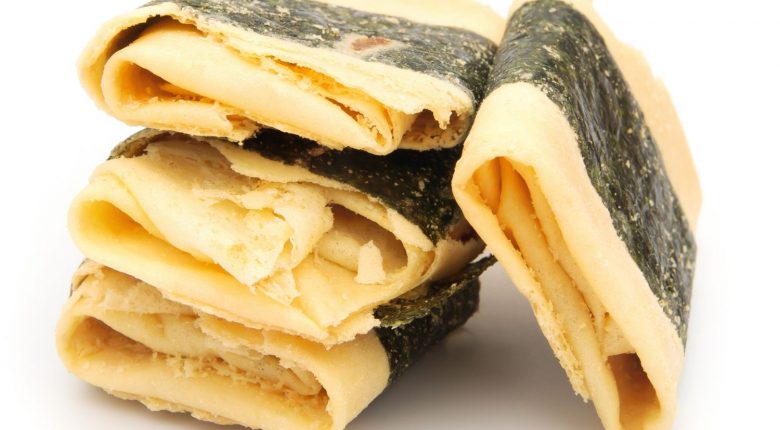Unveiling the World of Edible Seaweed
When it comes to healthy eating, one often thinks of leafy greens, fruits, and lean proteins. But have you ever considered adding seaweed to your diet? Often overlooked in Western cuisines, it is a nutritional powerhouse that has been a staple in many Asian cultures for centuries. Packed with essential nutrients and boasting a myriad of health benefits, seaweed is not just a trendy food choice but also a sustainable one.
The Bounty of Edible Seaweed Varieties
Seaweed comes in a diverse range of types, each with its own unique flavours and textures. Some common edible varieties include nori, kelp, dulse, wakame, and arame. These varieties differ in taste, colour, and usage, making them versatile ingredients for a variety of dishes.
Sourcing Seaweed: Where and How
In the United Kingdom, finding edible seaweed is becoming increasingly accessible. Coastal areas, particularly those along the North Atlantic, offer prime locations. However, it’s crucial to gather seaweed responsibly, ensuring its sustainability and the health of marine ecosystems. Alternatively, many health food stores now offer dried algae products, making it convenient for those who might not have access to coastal regions.
Storing and Preserving Seaweed
To make the most of your seaweed haul, proper storage is essential. Dried ones can be stored in an airtight container, away from direct sunlight and moisture, to maintain its freshness and flavour. If you’re fortunate enough to harvest fresh seaweed, blanching and freezing are effective preservation methods. These techniques lock in the nutrients and ensure your food stays delicious for months to come.
Freezing: To freeze seaweed, blanch it briefly in boiling water, then plunge it into ice water to stop cooking. Pat dry, portion into airtight bags, remove excess air, and seal. Label with date and freeze. This retains nutrients and flavour for future use.
For short-term preservation, keep it the refrigerator. Rinse thoroughly, pat dry, and wrap in a damp paper towel. Place in a breathable container or perforated plastic bag. Store in the crisper drawer, ideally within 2 days. For extended storage, blanch, cool, and freeze seaweed in airtight bags. Thaw and use as needed, maintaining its quality and nutritional value.

Culinary Adventures with Seaweed
Incorporating seaweed into your meals doesn’t require advanced culinary skills. Dried seaweed can be a flavourful addition to salads, soups, and stir-fries. Nori, often used to wrap sushi, can also be crisped and enjoyed as a standalone snack. Adding a touch of seaweed to your dishes introduces a burst of umami, enhancing the overall flavour profile.
Changing Habits: Embracing Seaweed in Your Diet
Introducing this food into your diet might seem like a daunting task, especially if it’s a new ingredient for you. Start small by experimenting with familiar dishes – sprinkle dried seaweed on your avocado toast or mix it into your pasta sauce. Gradually, as you become more comfortable, you can explore more elaborate recipes that highlight its unique taste.
A Nutritional Powerhouse with Countless Benefits
Seaweed isn’t just delicious; it’s incredibly nutritious too. Rich in vitamins, minerals, and antioxidants, it can contribute to improved digestion, bone health, and a strengthened immune system. It’s a particularly excellent source of iodine, a mineral essential for thyroid function. Moreover, seaweed’s low-calorie and high-fibre content makes it an asset for weight management.
6 Health Benefits of Adding Seaweed to Your Diet
Seaweed isn’t just an oceanic delight; it’s a nutritional powerhouse that offers a wide array of health benefits. Whether you’re seeking to boost your overall well-being or target specific health concerns, incorporating seaweed into your diet can make a significant difference. Let’s dive into some of the remarkable health benefits that seaweed brings to the table.
Rich in Essential Nutrients
Seaweed is a treasure trove of essential vitamins and minerals. It’s particularly renowned for its high iodine content, a vital component for healthy thyroid function. This mineral plays a crucial role in regulating metabolism, supporting cognitive function, and maintaining hormonal balance. Additionally, seaweed is a notable source of iron, calcium, magnesium, and potassium, all of which contribute to various bodily functions, from bone health to nerve transmission.
Abundant in Antioxidants
Antioxidants are your body’s first line of defense against harmful free radicals. Seaweed is brimming with antioxidants like vitamin C, vitamin E, and beta-carotene. These compounds help neutralize oxidative stress, reducing the risk of chronic diseases and supporting skin health. Regular consumption of antioxidant-rich foods like seaweed can contribute to a stronger immune system and a youthful complexion.
A Source of Heart-Healthy Compounds
Seaweed contains heart-friendly components that promote cardiovascular health. One such compound is omega-3 fatty acids, which are renowned for their anti-inflammatory properties and their role in reducing the risk of heart disease. Moreover, the fiber content in seaweed can aid in lowering cholesterol levels, supporting healthy blood pressure, and improving overall heart function.
Supports Digestive Health
Fiber is a fundamental nutrient for digestive health, and seaweed boasts a substantial amount of it. Fiber aids in maintaining regular bowel movements, preventing constipation, and supporting a balanced gut microbiome. By promoting healthy digestion, seaweed contributes to nutrient absorption and can help prevent digestive disorders.
Weight Management Ally
For those looking to manage their weight, it can be a valuable ally. Low in calories and high in fiber, it provides a sense of satiety, helping to curb overeating. The rich nutritional profile of seaweed ensures that you’re not compromising on essential nutrients while working towards your weight goals.
Potential Cancer-Fighting Properties
Some types of seaweed contain bioactive compounds that have shown promise in cancer prevention. These compounds, such as fucoxanthin and fucoidan, exhibit antioxidant, anti-inflammatory, and anti-cancer properties in preclinical studies. While further research is needed, the potential cancer-fighting properties of seaweed make it an exciting subject of investigation.
The Sustainable Solution for Future Meals
As concerns about the environmental impact of traditional farming practices grow, seaweed emerges as a sustainable solution. The cultivation requires no arable land, freshwater, or fertilizers. It absorbs carbon dioxide during growth, mitigating ocean acidification. Its rapid growth rate and minimal resource requirements position seaweed as a viable food source to feed our growing global population without further straining the planet’s resources.
Embrace the Future: Make Seaweed a Staple
Incorporating seaweed into your diet is a step towards a healthier you and a healthier planet. By diversifying your culinary choices, you’re contributing to the reduction of land-based farming’s environmental impact. As seaweed gains traction as a superfood, it’s easier than ever to find seaweed-based products in stores or online. Whether you’re a seasoned foodie or an adventurous eater, it offers a world of flavours and benefits waiting to be explored.
6 Seaweed Varieties to try
When it comes to incorporating seaweed into your diet, you’ll be delighted to discover a diverse array of edible seaweed varieties that can tantalize your taste buds and boost your nutritional intake. From sushi wraps to hearty soups, each type of seaweed brings its unique flavor, texture, and health benefits to the table.
Nori: The Sushi Staple
Nori, perhaps the most recognized seaweed variety, is commonly used to wrap sushi rolls. This thin, dark-green seaweed is roasted to achieve its distinctive texture and flavor. Beyond sushi, nori can be crisped into chips, crumbled over salads, or used as a savory garnish for various dishes.
Kelp: A Nutrient-Rich Giant
Kelp, with its long, wide fronds, is a nutritional powerhouse that grows abundantly in underwater forests. Rich in vitamins and minerals, kelp is often used to make kelp noodles or is incorporated into soups and stews. Its umami flavor adds depth to broths and makes it a versatile ingredient in various cuisines.
Dulse: The Umami Boost
Dulse, known for its reddish-brown color, boasts a distinct umami taste. It can be enjoyed in its dried form as a snack, added to salads for a punch of flavor, or even used as a plant-based alternative to bacon when pan-fried. Its versatility and unique taste make dulse a favorite among those looking to experiment in the kitchen.
Wakame: A Sea of Possibilities
Wakame, with its delicate texture and mild flavor, is a popular choice for salads and miso soup. Its tender fronds rehydrate quickly, making it a convenient option for quick and nutritious meals. Wakame’s vibrant green color adds visual appeal to dishes and complements its impressive nutrient profile.
Arame: The Mild and Nutrient-Rich Option
Arame, known for its fine, dark strands, offers a mild, slightly sweet flavor. This seaweed variety pairs well with vegetables, grains, and legumes, making it an excellent addition to stir-fries and side dishes. Arame is particularly rich in iodine and minerals, adding both taste and nutritional value to your meals.
Kombu: The Flavor Enhancer
Kombu, a thick and robust seaweed, is often used as a flavor enhancer in broths and stocks. Its natural glutamic acids contribute a satisfying umami taste, making it a staple in Japanese dashi broth. Kombu can also be cooked and enjoyed as a side dish, offering a range of vitamins and minerals.
In Conclusion
In a world where sustainability, health, and innovation converge, seaweed stands out as a star ingredient. From its diverse array of varieties to its countless health benefits, embracing this food can transform your meals and your impact on the environment. By taking small steps to integrate seaweed into your diet, you’re not only enhancing your well-being but also supporting a more sustainable future for generations to come. So, why wait? Dive into the world of seaweed and discover a culinary adventure that promises both deliciousness and responsibility.
